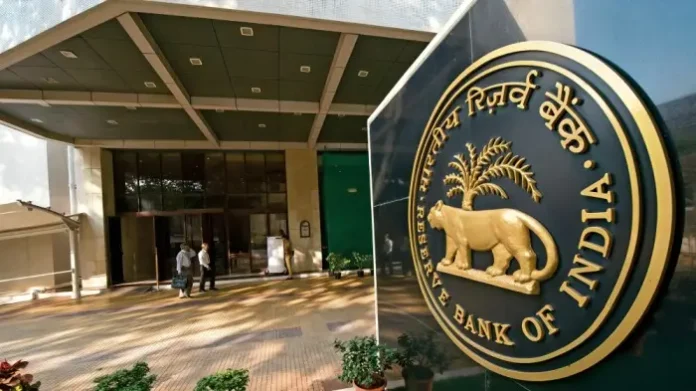RBI Holds Growth Outlook Steady at 6.5% Despite Trump‑Led Tariff Shock On August 6, 2025, the Reserve Bank of India (RBI) held its repo rate steady at 5.50%, and importantly, retained its GDP growth forecast for the fiscal year 2025‑26 at 6.5%, signaling confidence in India’s economic resilience despite mounting external headwinds from tariff actions by then‑President Donald Trump.
1. Monetary Policy Decision: Key Highlights
- The RBI’s Monetary Policy Committee (MPC), led by Governor Sanjay Malhotra, voted unanimously to maintain the repo rate at 5.50%, aligning with market expectations ahead of the policy announcement.
- The committee also affirmed a “neutral” policy stance within its monetary framework, reflecting a cautious, wait‑and‑watch approach amid evolving global uncertainties.
- CPI inflation, which had dropped to a six‑year low of 2.1% in June, was revised downward to an average of 3.1% for FY26, from the earlier 3.7% projection.
2. Tariff Uncertainty and External Headwinds
- On August 1, 2025, the U.S. imposed a 25% tariff on Indian exports. President Trump also threatened further levies in retaliation for India’s continued Russian oil imports, creating new trade tensions.
- These sudden developments added to existing uncertainties in global trade that RBI flagged as risks to India’s growth outlook. The central bank emphasised that the tariff situation was still evolving and precise economic impact remained difficult to gauge.
- As noted by Governor Malhotra: “It is really very difficult to predict as to what the impact will be … we do not have sufficient data to revise our GDP forecasts”.
3. Why RBI Kept GDP Forecast Unchanged
a) Data Lags and Ongoing Transmission
- The RBI has already implemented 100 basis points of repo rate cuts since February 2025, including a 50 bps cut in June. Policymakers want to ensure these cuts have fully transmitted through credit markets and the broader economy before taking further action.
- Malhotra emphasized that the full effect of the “front‑loaded” easing is still unfolding and requires time to reflect in investment, consumption, and borrowing trends.
b) Growth Indicators Holding Up
- The RBI noted that despite sluggish credit growth, export pressures, and modest corporate earnings, core macro indicators continue to signal resilience. Urban discretionary consumption remains slow, but rural consumption and public sector capital spending remain supportive.
- High frequency indicators for May–June 2025 showed mixed signs, but overall domestic demand was aligning broadly with central bank expectations.
c) Measured Stance Amid Inflation Outlook
- With headline inflation at 2.1% and core inflation modestly above 4%, the RBI had room to be patient. It revised its inflation projection downward to 3.1% for FY26, noting inflation may pick up later in the year but remains under control.
- The MPC raised the bar for further monetary easing but left open the possibility of an additional 25–50 bps cut later in the year, depending on evolving inflation and growth dynamics.
4. Market Reactions: Bonds, Currency and Reserves
a) Currency Intervention and FX Reserves
- Indian foreign exchange reserves fell sharply by $9.3 billion to $688.9 billion as of August 1. Analysts attribute this decline to RBI intervention to support the rupee amid tariff‑related tensions.
- The rupee weakened by 1.18% during the week through August 1 (its biggest weekly drop in nearly three years) and further declined thereafter. Without RBI’s support, it could have touched record lows.
b) Bond Market and Equity Response
- Following the policy announcement, India’s 10‑year sovereign yield rose by ~4 bps to ~6.3701%, reflecting caution in bond markets due to a lack of dovish signals.
- Equities also dipped modestly, with the benchmark indices down around 0.2% each as markets weighed the RBI’s neutral tone and external uncertainties.
5. Economic Forecast: Current and Forward Looking
| Fiscal Year | GDP Forecast | Inflation (CPI) |
|---|---|---|
| 2025–26 | 6.5% | 3.1% (avg), down from earlier 3.7% |
| 2026–27 | 6.6% | Inflation expected to rise modestly |
- The RBI also released a projection for FY26–27, expecting modestly stronger growth at 6.6% as the effects of easing and ongoing reforms play out.
- They noted that cyclical pick‑up, favorable monsoon (supporting rural demand), and government capital outlays remain pillars supporting medium‑term growth.
6. External Analysis and Economic Impact Estimations
- Goldman Sachs projects that the new 25% tariff might trim India’s GDP by ~0.3% – reducing growth from 6.5% to roughly 6.2% if other conditions remain constant.
- Economists at Nuvama Institutional Equities and Emkay Global Financial Services point to slowing credit, export performance, and corporate profit cycles, flagging room for another 50 bps cut if necessary however acknowledging elevated uncertainty.
- Despite these warnings, the RBI’s decision underscores a belief that domestic buffers and policy flexibility remain adequate to absorb short‑term shocks without premature action.
7. Strategic Message: “Keeping the Powder Dry”
- Through its communication, RBI conveys a strategic balancing act: enough stimulus has been provided, but given uncertainties—chiefly around Trump‑led tariff escalation—the bank is keeping its “powder dry” to ensure agility in responding if downside risks materialise.
- Governor Malhotra reiterated that macroeconomic policy tools must remain agile, and decisions will be made on a policy‑by‑policy basis, guided by incoming data rather than preset timelines.
8. Broader Economic Context
a) Global Headwinds
- The broader global economy faces multiple stressors: trade conflicts, volatile financial markets, and geopolitical realignments. Against this backdrop, India remains relatively insulated, though not immune.
- The U.S. Federal Reserve’s stance—given weak U.S. jobs data and inflation softness—further adds complexity to global rate differentials. Markets price in a high probability (~88%) of a Fed rate cut by September, further shifting interest rate dynamics globally.
b) Domestic Linkages and Structural Strengths
- India remains among the fastest‑growing large economies. The RBI reiterated India’s medium‑term growth prospects remain “bright,” drawing on robust fundamentals such as demographic demographics, improving ease‑of‑doing‑business, and domestic policy reforms.
- Aided by a good monsoon, rural incomes are supported; government capital spending remains high; and credit conditions continue to normalize post‑front‑loaded rate cuts.
9. What to Watch Going Forward
🕰️ Upcoming Data
- Quarter‑on‑quarter GDP growth for Q1 FY26 (April–June) will be released at the end of August. Markets will look closely at whether growth momentum is sustaining or softening .
- July inflation data, expected to reflect record lows, will further inform the inflation trajectory and possible pace of future rate cuts.
Trade Talks and Tariff Developments
- Ongoing negotiations with the U.S. over a trade deal, and possible moderation of tariffs (e.g. earlier hopes of capping U.S. tariffs at ~15%) may shape growth prospects.
- If threats escalate—especially linked to recessionary partner economies or further oil import restrictions—the policy outlook may need re‑evaluation.
RBI Liquidity Measures
- RBI plans a CRR (cash reserve ratio) cut from September 6, and will continue variable repo and reverse repo operations to keep overnight rates aligned with policy rates, maintaining liquidity in a “sufficiently positive zone”.
- Clarity on reforms to the liquidity framework and its signalling will be important for transmission of monetary policy.



